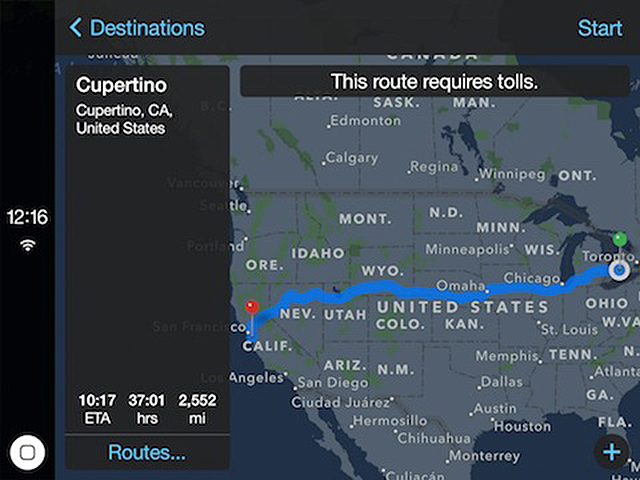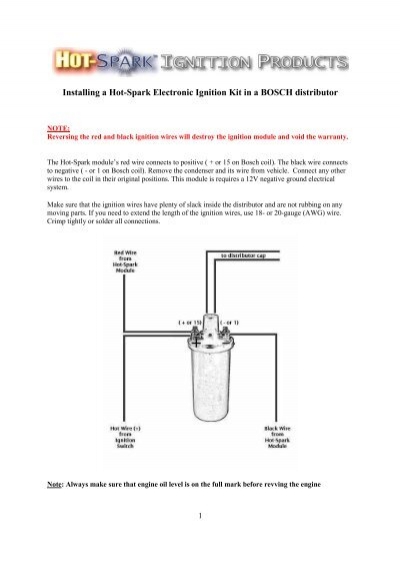Ignition Tweak
Posted By admin On 28/07/22
The Combo
Bill Stockdale's 1967 Shelby Cobra replica is powered by a built Ford 351 Windsorbased motor stroked out to 418 ci. The 10.2:1 engine is equipped with free-flowing Edelbrock Victor aluminum heads and a fairly stout Isky hydraulic roller cam ground on a 110-degree lobe-separation angle (LSA), with 0.544/0.573-inch valve lift and 238/248 degrees duration at 0.050-inch tappet lift. Torque flows through a Tremec TKO five-speed/overdrive manual trans back to an independent rear suspension (IRS) based around a 3.27:1-geared Ford 8.8-inch centersection with Traction-Lok.
The Problem
It's a cool car, but all that jerking around kind of takes the fun out of it.' — Bill Stockdale
By Jay Freeman (saurik) “the alternative to apps” Ignition. Re: ignition tweaks The stock Nissan ignition will work similar: start the engine with a quick twist of the key, engine barely turns over before catching, runs smooth etc. This assumes the engine is tuned well, good compression and new spark plugs, etc. The latest tweets from @TryIgnition. Rescue: Basic Carb and Ignition Tweaks Tame a Bucking Shelby Cobra Marlan Davis 11/8/2017. George Floyd kin joins protest anthem album project. Ignition is a free third-party appstore for iOS and Android. Ignition is a free third-party appstore for iOS and Android. The #1 mobile app store library. Our library is now available for iOS and Android too! We bring all kinds of Apps to your mobile device.
When Stockdale purchased the car from the previous owner, it had a severe fuel leak as well as clutch issues. After they were fixed by a local shop, Stockdale says, 'Through the gears at full throttle, the car ran like a scalded dog—no hesitation when you stand on it, no bogging or stumbling. The car will scream!' Unfortunately, at part throttle, 'Anytime the engine gets below 1,800 to 2,000 rpm, it bucks and jerks as if you were in Fourth gear and going too slow—like just before you slow to a stop without downshifting. You have to constantly be tipping the throttle in any gear and keep the rpm over 1,800. I never get out of Third gear in the city.'
Research

Band-Aiding the problem, one shop replaced the Holley 750-cfm HP carb with a smaller 650-cfm unit. At this point, Stockdale says the Cobra would 'idle good, but kind of rich. I pulled the [spark] plugs and they were pretty black, so we went up two heat ranges on the plugs and went down 10 jet sizes in the carb—all without any real change. The shop told me, 'This is just the way the car is and I should be happy with it.' I have had a lot of performance cars over the years, and none of them ever acted like this.
'I don't know if the cam is just too big for the street, if the fuel system isn't set up right, or what. I've looked for vacuum leaks, but haven't found any. I would think that a vacuum leak would result in an inconsistent idle, but the idle is stable. I put on a new set of spark plug wires—still no change. I backed the timing down 10 degrees—no change. I'm out of ideas.'
The Diagnosis
0104] Swap and tune carburetor
0515] Tune or replace distributor
1617] Fresh Autolite spark plugs
18] Chassis-dyno test
As received at a local Ohio tuner facility, the spark plugs were black, indicating an overall rich mixture. There were no vacuum leaks, and cranking cylinder compression was OK. An initial run on the chassis dyno replicated Stockdale's complaint. The higher the gear, the worse the problem was. Assuming the engine is internally sound, a driveability issue like Stockdale's is often the result of a carburetor and/or ignition problem.
Here, the smaller 650 carb turned out to be a poor fit for the 418ci engine. Trying to make it work, someone had jetted the primaries way too rich, and they were still way rich even with Stockdale's claimed 10-size lean-out. On the other hand, the 650 was dangerously lean upstairs. Anytime you have to go up or down more than about a half-dozen jet sizes, it's usually a clue something else is off. In this case, to achieve a stable idle with a big cam and small carb, the curb idle screw may have been turned too far in, excessively uncovering the throttle-plate transfer slot to prematurely activate the main system. When that happens, the curb-idle mixture screws lose adjustment authority.
On the ignition side, the Cobra was running a Ford large-cap Duraspark magnetic-impulse distributor, circa 19751985. Like GM's HEI, it was made during the Nader (ha!) of engine performance, a time of strict emissions standards but before 'the computer' arrived to restore driveability. In stock form, these 'smog' distributors tend to have wacky centrifugal advance curves plus excessive amounts of spark-ported vacuum advance that was restricted by various analog switches and devices, generally limiting the amount of advance in the lower gears. These curves are not suitable to an emissions-exempt, performance engine with relatively high compression and a healthy cam.
One shotgun approach is changing out the 3.27:1 rear gears for a set of 3.90:1 or 4.10:1 gears, but on the other hand the lightweight Cobra combined with the TKO's steep First gear could make it amenable to ironing out the problem with just carburetor and ignition tweaks.
The Fix: Carb
The 650 carb's rich idle problem could have been overcome by fine-tuning its replaceable primary-side air-bleeds, but on the whole the carb was still on the small side for achieving the 418 engine's full top-end potential. As it was still available, the best overall move in this case was putting Stockdale's original, larger, Holley 750-cfm HP carb back on, then properly adjust and calibrate it. The first thing was setting the curb-idle mixture. Everyone seems to have their own pet method for adjusting a high-end Holley carb's four-corner idle-mixture screws. In this case, the tuner backed out (richened) all four idle mixture screws from their lightly bottomed position a little at a time to achieve the highest engine idle rpm. When idle stability got reasonably close, final idle-quality adjustments were primarily made on the primary screws, with slight richening as needed to help tune out any residual bucking. Basically, a 'cut-and-try' procedure. The car now idled smoothly (well, as smooth as a lumpy cam can get) at 925 to 950 rpm, where before it wasn't happy below 1,000 rpm.
With idle quality stabilized, the big carb required only slight main-jet changes. The primaries were leaned by five numbers (from No. 79 to No. 74); the secondaries needed slight richening (from No. 84 to No. 85). Finally, Holley jet extensions were also installed on the secondary side to prevent uncovering the jets when fuel sloshes to the rear of the float bowl under hard acceleration.
The Fix: Timing
Running on unleaded pump premium gas, this hot rod Ford liked about 36 degrees of total timing, all in by 3,200 rpm. The final installed curve ended up with 16 degrees of base (initial) timing, and 10 degrees of centrifugal advance in the distributor, starting at 2,100 rpm and all in by 3,200 rpm. Remember, the distributor rotates at half the crank speed, so the amount of advance in the distributor is doubled as read at the crank: 16 degrees initial on the balancer + (10 degrees distributor 2) = 36 degrees on the balancer. The vacuum advance was not connected; it's just too erratic for an engine and chassis of this caliber.
['06-Ford-Duraspark-bending-tab-changes-curve-rpm-start-point']
06] Bending the tab (circle) on the Duraspark alters the rpm point where the centrifugal advance starts: inboard brings the curve in sooner at a lower rpm; outboard delays curve initiation to a higher rpm because it effectively stiffens the springs.
['07-Ford-Duraspark-advance-springs-and-weights-location']
07] But altering the curve's advance-rate and total amount of advance requires major unit disassembly, as the slotted plate and springs are located beneath the breaker plate. The two ways to do this are 'out-of-motor' or 'on-motor.'
Other than slightly altering the centrifugal advance initiation threshold, putting a full centrifugal curve in a Ford OE-style distributor is a major pain in the butt because the centrifugal-advance mechanism is hidden inside the bowels of the distributor.
Whether in or out of the car, major disassembly is required; even experts take about 45 minutes every time they make a curve alteration.
Once you gain access, recurving kits to change the advance rate are available from Mr. Gasket and Crane Cams; the latter also includes an adjustable vacuum advance can in addition to lightweight springs
Changing the total amount of centrifugal advance may require custom mods, depending on which advance plate is in the existing distributor.
The Fix: MSD
If this sounds like way too much work, MSD has a better idea with its Pro-Billet Ford extra-duty standalone distributor. Access its GM-style, centrifugal-advance mechanism and stop bushing by merely removing the cap and rotor—about a 5-minute job. A curve similar to the Ford unit can be constructed by using one heavy silver spring, one light silver spring, and a purple bushing. On the downside, the MSD unit costs around $500 at Summit Racing, but quality and performance doesn't come cheap. You get what you pay for.
The Fix: Spark Plugs
The final fix was replacing Stockdale's fouled spark plugs with a fresh set of Copper-Core Autolite projected-tip resistor plugs. Stockdale already had a premium MSD ignition coil.

The Results
Basic ignition and carb tuning eliminated the low-rpm, part-throttle buck—without going to steeper rear gears. After the tune-up, the fat torque curve generated by the now smoothly running engine maintained 400+ lb-ft of corrected rear-wheel torque over a 1,400-rpm range starting at approximately 2,900 rpm. On the top-end, corrected power at the rear wheels was more than 390 hp from 5,200 through 5,600 rpm.
Ignition Tweakbox Alternative
Lessons Learned
Talk about driving down the wrong road! Every Band-Aid laid over the Cobra's wounded driveability only made things worse. Big cams tend to reduce low-end torque, making proper carburetor and ignition tuning critical. It appears Stockdale's part-throttle troubles sort of evolved (or devolved) from the new clutch. As we've seen in past rescues, clutch-release characteristics can affect overall driveability at low rpm. For those of us on a budget (and who isn't?), careful basic tuning on a street car may do away with the need for major parts changes. Don't be a parts swapper—be a parts fixer!
Need Junk Fixed?
If your car has a gremlin that just won't quit, you could be chosen for Hot Rod to the Rescue. Email us at pitstop@HotRod.com and put 'Rescue' in the subject line. Include a description of your problem, a photo, your location, and a daytime phone number.
Contacts
Autolite, a Division of FRAM Group IP LLC (Rank Group Ltd.); Lake Forest, IL; 855.200.5200; Autolite.com
Ignition Tweaked
Crane Cams; Daytona Beach, FL; 866.388.5120 or 386.310.4875; CraneCams.com
Ford Parts—Motorcraft Parts; Dearborn, MI; 800.392.3673; FordParts.com or Motorcraft.com
Holley Performance Products; Bowling Green, KY; 800.HOLLEY1 (nearest dealer), 866.464.6553 (tech), or 270.782.2900 (general); Holley.com
Mr. Gasket (A Holley Brand); Bowling Green, KY; 866.464.6553; Holley.com/brands/mr_gasket/
MSD Performance (A Holley Brand); El Paso, TX; 888.258.3835 (toll-free), 915.857.5200 (general); or 915.855.7123 (tech); MSDperformance.com